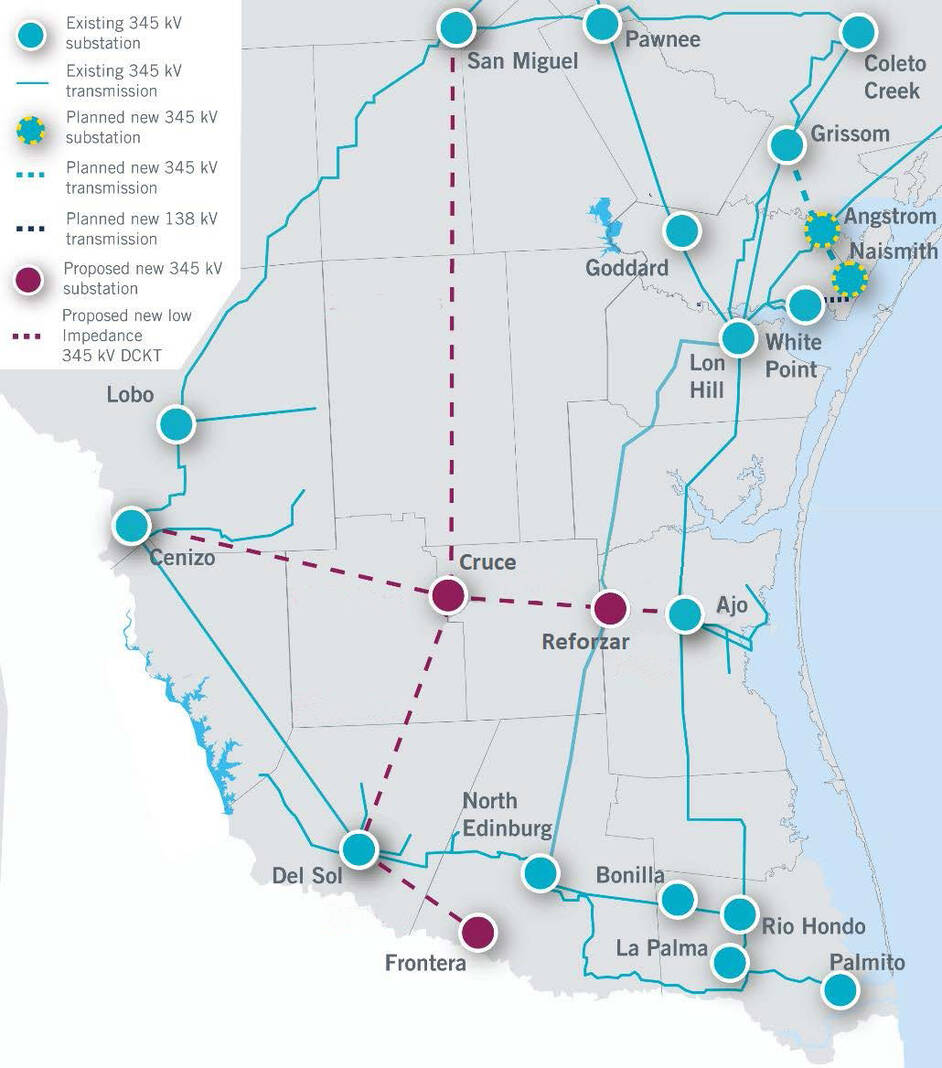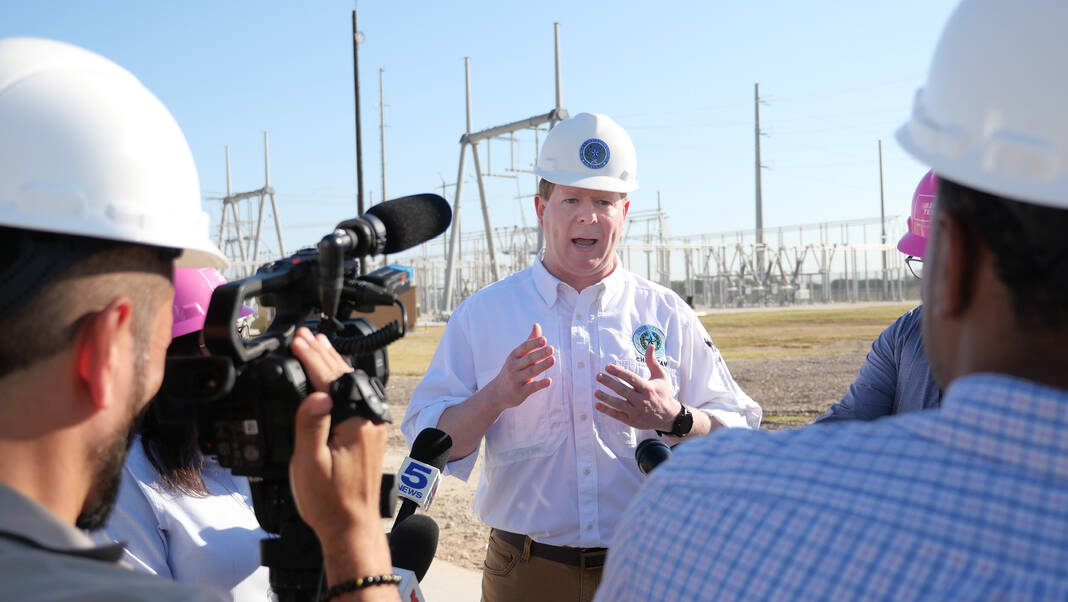Peter Lake, chairman of the Public Utilities Commission of Texas, was in the Rio Grande Valley on Oct. 10 to check on progress by AEP Texas on a major transmission line project that he said is a “key initiative of the PUC and the state.”
The RGV Reliability Project actually encompasses five separate transmission line project totaling up to 325 miles and costing between $1.2 billion and $1.3 billion, according to early estimates. The cost will be spread among Electric Reliability Council of Texas (ERCOT) ratepayers statewide. ERCOT covers about 80 percent of the state’s electric markets.
In the Valley, AEP Texas and Electric Transmission Texas will split the work on a roughly 27-mile stretch of new line and poles between the existing ETT Del Sol substation near Rio Grande City and the proposed new AEP Frontera substation in Mission at a cost of around $118.5 million. The larger project will include two more new substations, roughly 60 new miles of transmission line between Del Sol and Cruce substations, 99 to 133 miles of new line between Cruce and San Miguel substations, and more than 105 miles of new line between Cenizo and Ajo substations.
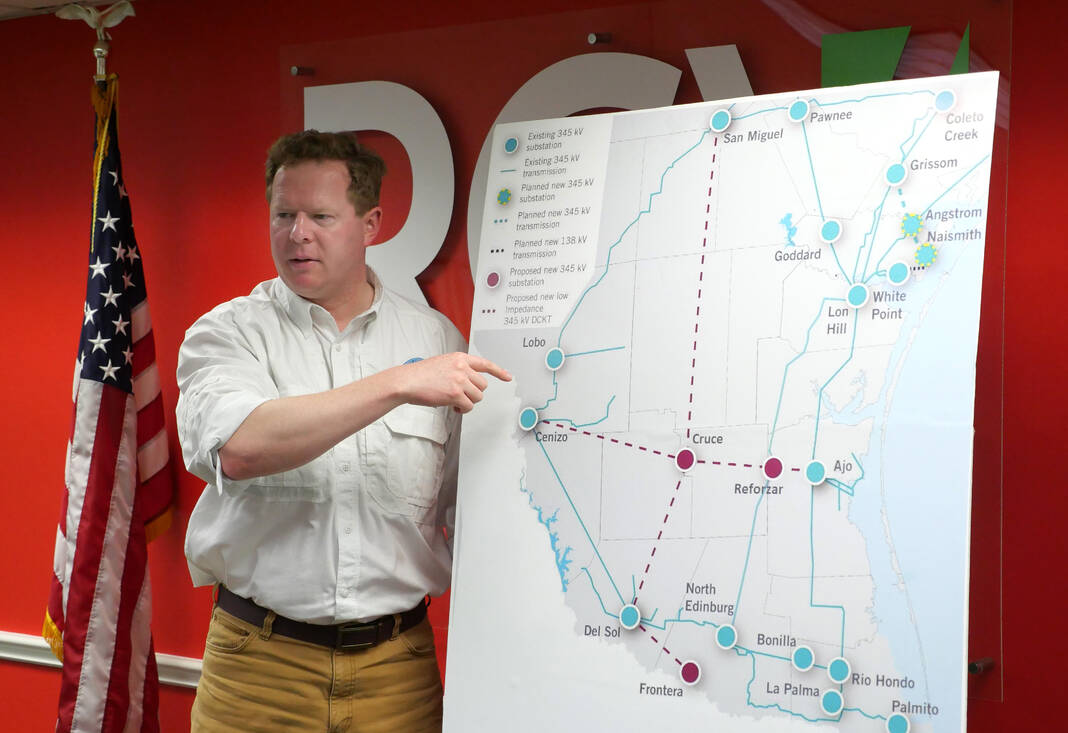
PUCT announced in December 2021 the endorsement by ERCOT of construction of six new 345-kilovolt (kV) transmission lines and new substations. ERCOT’s board of directors designated the project critical.
“This one of the key initiatives that the PUC has undertaken since the new commissioners were put in place after the winter storm of 2021,” Lake said after a tour of the North Edinburg Substation. “This is a crucial part of the state and this transmission project is a crucial project for this key part of the state.”
He said the RGV Reliability Project will bring more power to the Valley to meet the “tremendous growth we’ve seen in this part of Texas,” facilitating the transfer of electricity in and out of the Valley when necessary, and make the system more resilient against heavy weather from the Gulf.
“Instead of a couple of lines along the coast we’re adding more lines inland, so we have better protection from hurricanes,” Lake said. “The bottom line is this is all about keeping the lights on in Texans’ homes and this will help do that.”
The RGV Reliability Project was one of the first initiatives PUCT took on following the February 2021 winter storm that crippled the state, he said.
“The PUC and the state of Texas asked AEP to act quickly and they have,” Lake said. “They are moving very rapidly to get this transmission project built, to bring more reliability and more resilience to the Rio Grande Valley.”
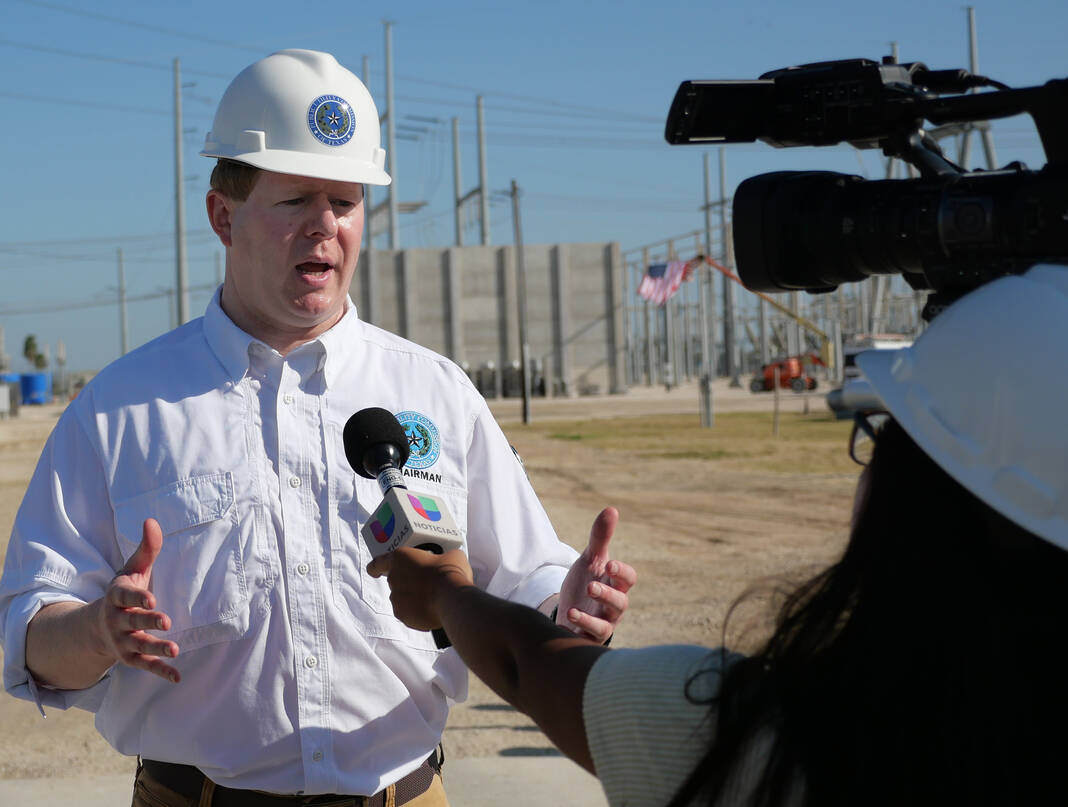
Judith Talavera, AEP Texas president and chief operating officer, joined Lake on his visit to the Valley and the entire project should be finished by late 2026, though phases of it will be completed much earlier. Speaking to business and civic leaders at the McAllen Chamber of Commerce following the Edinburg substation tour, she said AEP Texas has scheduled public open houses for Oct. 24, 25 and 26 for residents and/or businesses owners to share their concerns over potential routes for the new transmission lines and poles. More information about those open houses is available at the AEP Texas website, Talavera said.
“A lot of the behind the scenes work is taking place, the routing analysis, the environmental studies that are required,” she said. “We have to develop different routes to be considered in order to be approved by the PUC before anything is done and finalized and constructed, so you’re not going to see construction taking place for a little while yet for this portion of the project.”
AEP (American Electric Power) is made up of six other companies besides AEP Texas. Talavera said the Valley has always been the fastest growing region within the AEP footprint, which stretches from the tip of Texas to Michigan.
Lake told the McAllen chamber that one of PUCT’s main objectives following the 2021 winter storm is to make sure to incentivize construction of more on-demand power sources, such as natural-gas-fired power generating plants, as opposed to renewable sources such as wind and solar.
“Because sometimes the wind doesn’t blow,” he said. “Sometimes it’s cloudy. One of the biggest reforms we’re driving right now is making sure we have enough on-demand power. … But the Valley has a lot of renewables. And so when the wind’s not blowing we’ve got to get power to the Valley from (elsewhere in) the state. And that’s why we need more than just those two lines.”
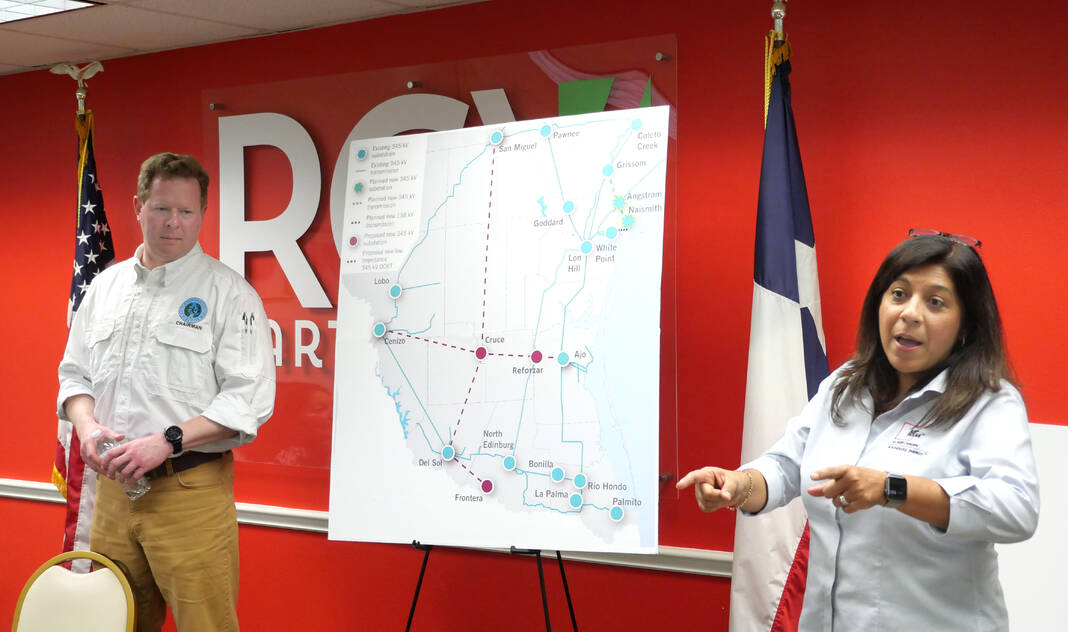
Conversely, when the sun is shining and the wind is blowing in South Texas, it’s important to be able to move surplus power from the Valley to the rest of the state, Lake said.
“We’d love to get that power to the rest of ERCOT, to the rest of Texas, but we can’t,” he said. “We have a bottleneck with these wires. We are trying to make use of all the resources we have. We can’t rely on wind and solar, but they’re certainly a benefit when they’re available and we certainly want to capture that benefit. This transmission project would enable that.”
Lake and Talavera also met with business and civic leaders with the RGV Partnership in Weslaco as part of the Oct. 10 tour of the Valley.
